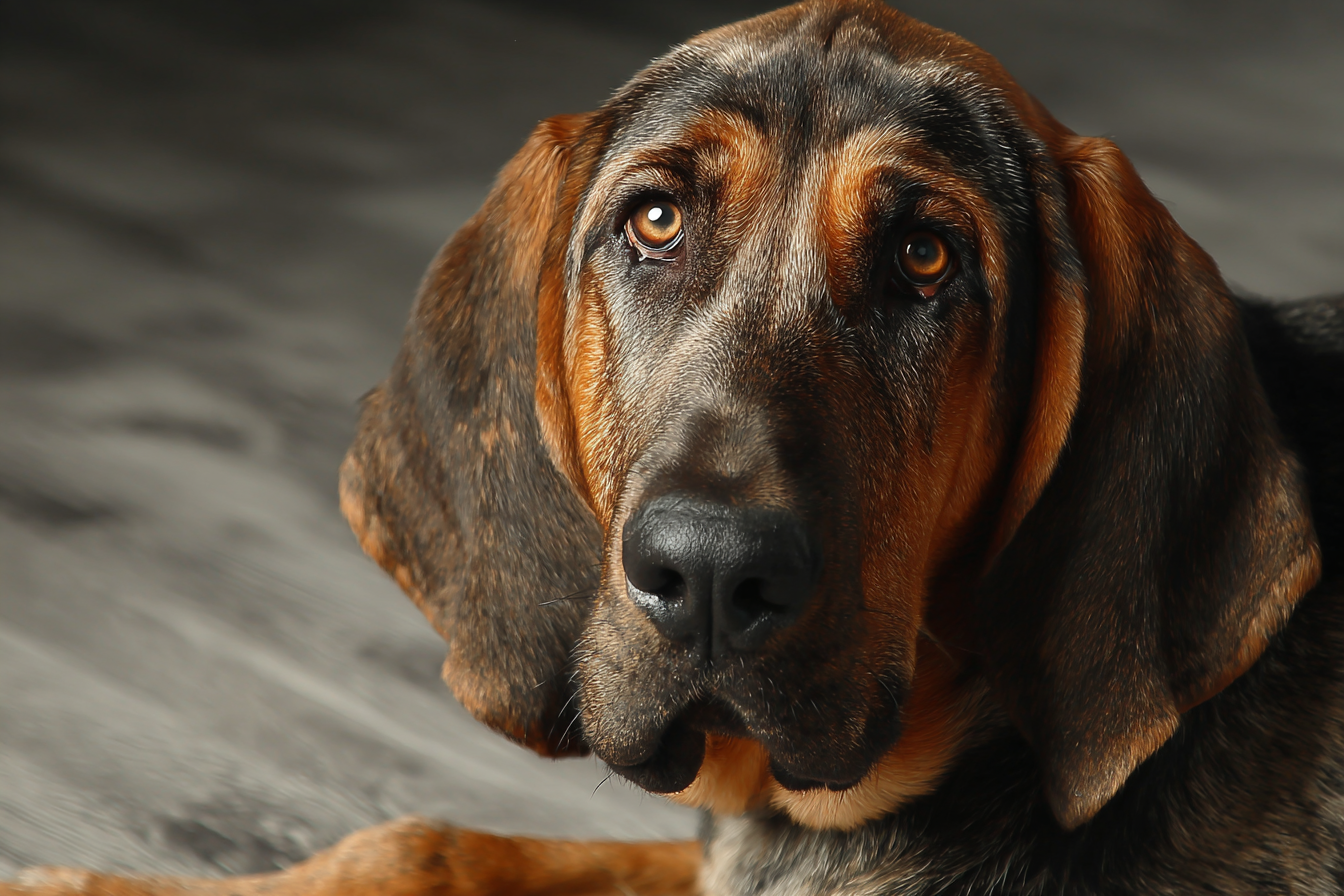Bloodhounds are a unique and fascinating breed, renowned for their incredible sense of smell and relentless tracking abilities. However, owning a Bloodhound comes with its own set of behavioral challenges. These large, scent-driven dogs can develop stubbornness, excessive barking, and other issues if their natural instincts and needs are not properly managed. Recognizing these behavior problems early and applying effective solutions that suit the Bloodhound’s nature is key to maintaining a healthy and happy relationship with your canine companion.
Common Behavior Problems in Bloodhounds
Bloodhounds are generally gentle and affectionate dogs, but certain behavior problems can arise that may frustrate owners unfamiliar with their breed traits. Some of the most common issues include:
- Stubbornness: Bloodhounds are known for having an independent streak. When they catch a scent, they can become fixated and refuse to listen or follow commands until their curiosity is satisfied.
- Excessive Barking and Howling: Being vocal dogs, Bloodhounds may bark or howl frequently, especially when they sense something unusual or are left alone for long periods.
- Escaping and Wandering: Driven by their scenting instincts, Bloodhounds are notorious for trying to follow smells, leading to escape attempts or wandering off if not properly contained.
- Destructive Chewing: When bored or lonely, Bloodhounds may resort to chewing furniture, shoes, or other household items as a way to relieve stress or entertain themselves.
- Separation Anxiety: Due to their social nature, Bloodhounds can develop anxiety when left alone, resulting in behaviors like pacing, whining, or destructive activities.
Underlying Causes from Breed Traits
Understanding why Bloodhounds display certain behaviors requires recognizing their breed characteristics. Bloodhounds were originally bred for trailing scents over great distances. Their powerful noses and determination make them extremely focused when tracking, which can translate into stubbornness and distraction. This strong drive to follow scents often competes with obedience commands.
Additionally, Bloodhounds have strong social bonds and tend to be very attached to their owners or family pack. Their vocalizations serve as a form of communication, especially when they feel lonely or alert to something unusual. Their large size and physical strength also play a role, as without proper training and exercise, their natural energies and instincts can manifest as unwanted behaviors.
Preventive Measures
Preventing behavior problems in Bloodhounds starts with setting clear boundaries, routines, and providing appropriate outlets for their natural drives. Some key preventive measures include:
- Early Socialization: Introduce your Bloodhound to various people, environments, and experiences from a young age to build confidence and reduce fear-based behaviors.
- Consistent Training: Establish clear rules and commands early on, using positive reinforcement techniques that reward desirable behaviors, and maintain consistency.
- Secure Environment: Make sure your yard or outdoor area is securely fenced to prevent escapes. Consider double gates or tall fences to contain a determined tracker.
- Regular Exercise: Bloodhounds need daily physical activity and mental challenges to burn off energy and keep their minds stimulated.
- Enrichment Toys and Games: Provide scent games, puzzle toys, and interactive activities to engage your Bloodhound’s powerful nose and prevent boredom.
Training and Corrective Techniques
When behavior issues do arise, training and corrective measures tailored to the Bloodhound’s temperament can help. Here are some effective techniques:
- Patience with Stubbornness: Bloodhounds respond best to gentle persistence rather than harsh corrections. Use food rewards, praise, and short training sessions to maintain interest.
- Redirect Curiosity: When your Bloodhound is sniffing or distracted, use commands such as “leave it” or “come” and reward compliance immediately.
- Calming Techniques: For excessive barking or howling, identify triggers and work on desensitization or counter-conditioning, gradually exposing your dog to the stimulus in a controlled way.
- Crate Training: This helps address separation anxiety by providing a safe, comfortable space that your Bloodhound associates with positive experiences.
- Chewing Alternatives: Offer plenty of safe chew toys and rotate them regularly to maintain interest and prevent destructive habits.
Role of Exercise and Mental Stimulation
Exercise and mental stimulation are crucial in managing Bloodhound behavior. Their endurance and intelligence demand both physical and cognitive outlets to channel their energy constructively.
- Daily Walks and Tracking Sessions: Use long walks, preferably in natural environments, incorporating scent tracking games to satisfy their innate desires.
- Interactive Play: Engage in fetch, tug-of-war, or obedience training sessions that challenge your dog’s body and mind.
- Scent Work Activities: Encourage your Bloodhound’s natural abilities with organized scent work, teaching them to find hidden objects or treats by scent.
- Mental Challenges: Provide puzzle feeders and training tasks that keep their brains active and reduce boredom-related behaviors.
Without enough mental and physical stimulation, Bloodhounds can become bored and restless, increasing the likelihood of unwanted behaviors such as barking, chewing, or escaping.
When to Seek Professional Help
Despite your best efforts, some Bloodhound behavior problems might persist or worsen. In such cases, seeking professional help is advisable. Consider consulting a:
- Certified Dog Trainer: A trainer with experience in scent hounds can offer tailored advice, advanced training techniques, and ongoing support.
- Veterinary Behaviorist: For severe anxiety, aggression, or compulsive behaviors, a veterinary behaviorist can diagnose any underlying medical issues and recommend behavioral therapies or medication.
- Canine Behaviorist: Specialists in dog behavior can assess your Bloodhound’s environment and behavior patterns to develop a comprehensive modification plan.
Early intervention by professionals can improve outcomes, reduce frustration, and enhance the bond between you and your Bloodhound.
Enjoying Life with Your Bloodhound
Bloodhounds are remarkable companions whose unique behavioral traits stem from their extraordinary heritage. By understanding common behavior problems and addressing their root causes through prevention, consistent training, exercise, and mental stimulation, you can foster a positive environment for your dog to thrive.
While challenges like stubbornness and excessive barking can arise, they are manageable with patience, kindness, and appropriate strategies. Remember, when in doubt, professional guidance can make a big difference. With the right care, your Bloodhound will reward you with loyalty, affection, and an unrivaled sense of adventure.







